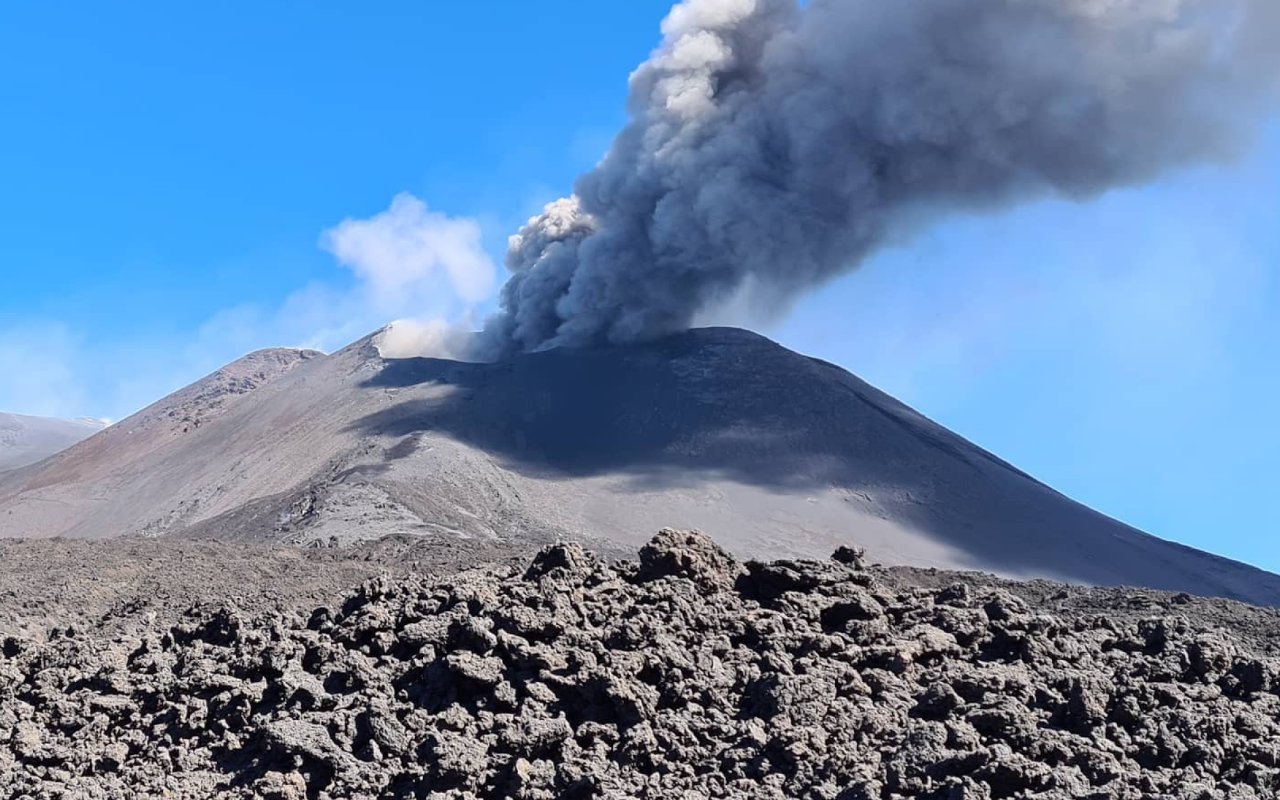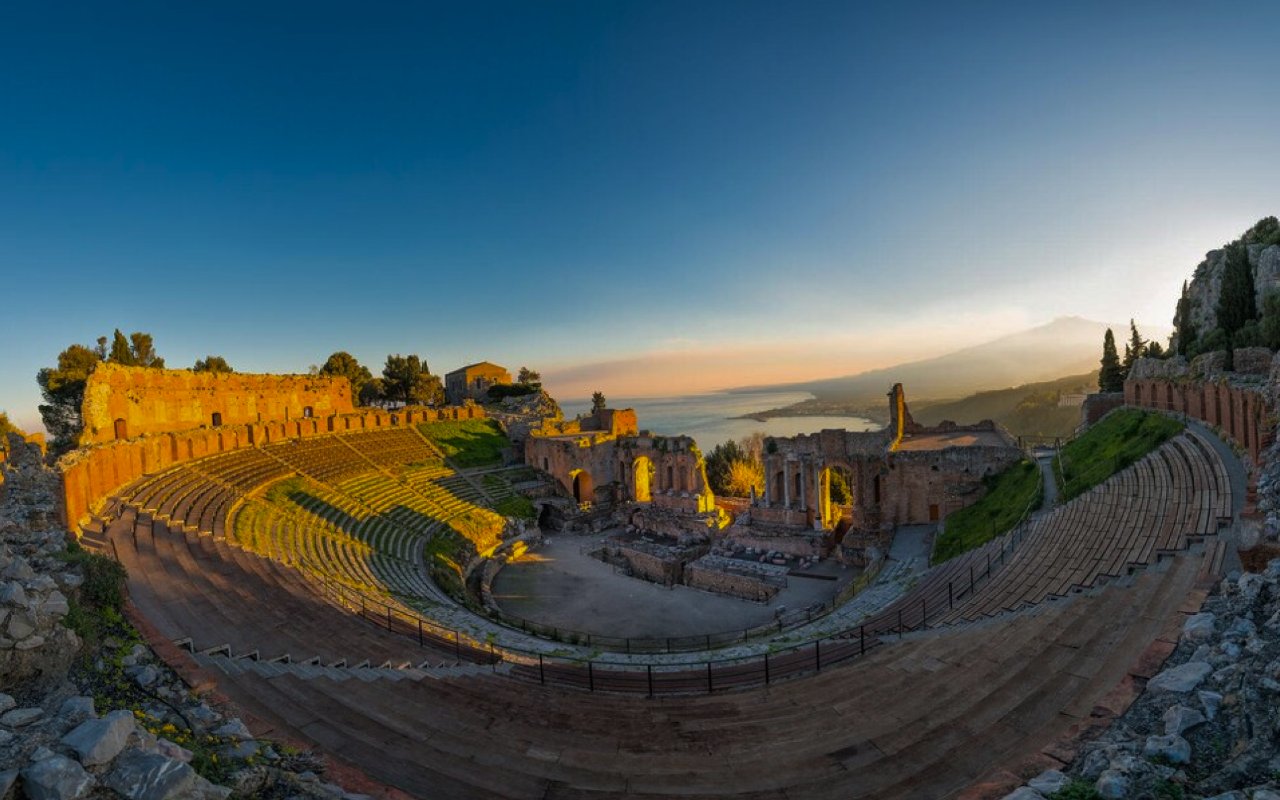article by Alessio Turazza,
from Gamberorosso.it
https://www.google.com/amp/s/www.gamberorosso.it/notizie/notizie-vino/i-vini-del-vulcano-l-etna-le-sue-vigne-e-le-sue-migliori-etichette/amp/
Etna: a territory with archaic charm.
Fair, proud, unpredictable and unfriendly. The impetuosity of nature has shaped on Etna a landscape with a harsh face, marked by cavernous furrows and rough ridges, an arcane scene of clash between elements of nature. Fiery lava, transformed from the air into hard stone, which sinks into the depths of a cobalt sea. Enameled turquoise sky, frosted by the incessant wind. Violent sun that pierces the clear atmosphere of the altitude with insolent do. Fast clouds that caress the solitary summit of the mountain. Land that does not like compromises and cannot leave you indifferent. Clean, dense and compact colors. There is no room for frivolous shades, here dominate the dark and rough black with lava, the green of the pines and chestnut trees, the floating silver of the olive trees shaken by the wind. Menacing land, compressed and then exploded from the sea to the sky. A volcano on the edge of an island, in the middle of the Mediterranean, the black heart of its story, myths and legends.
Etna viticulture
It is here that old sinuous and twisted vines, wooden living sculptures, sink the deep roots between sand and stones, desperate for a precarious survival. The most beautiful vineyards of Etna have the charm of a harmonious disorder, of the spontaneous randomness of nature, which rebels, overcomes every attempt at domestication. Each plant has its unique and extraordinary shape and history. Lazy and intermittent lava stone terraces, the uneven profile of the mountain, misaligned rows, cacti and olive trees that break the vineyard, claiming the ancestral right to inhabit that place. We are far from the linear geometry, algid and aseptic, of the new espalier systems. Indeed, when you encounter such vineyards on the volcano, you almost don’t believe it. This is the magnetic and gloomy charm of the volcano, of that black cone of lava that the eye cannot avoid. Always present on the horizon, iridescent monolith in the sunlight.
Lava wines
Etna wines are the sons of this extreme land and carry an intransigent nature in the glass. The whites do not know the accommodating postmodern softness, but the sharp, citrus and saline acidity of the carricante, which sinks deep and sharp like a turkish scimitar. The reds do not have the reassuring and harmonious character of so many wines created on an – alleged – international style, but an essential and austere profile. They have the delicacy of small wild fruits that appear in the shade of smoked rock, Mediterranean scrub herbs and refined spices. Acidity and tannins claim their space with naked force, far from being domesticated and softened. This expressive authenticity makes Etna wines unique. A small territory capable of producing great excellence, the more it remains true to itself and its vines: the pure carricante for the whites, the nerello mascalese, with possibly a small percentage of nerello hood for the reds.
The word terroir is often abused in the wine story, but it seems to have been created thinking of Etna, its millenary traditions, its secular vineyards suspended between the sky and the sea. The uniqueness of a microclimate that blends the sensual warmth of the Mediterranean, with the cold of the mountains, generating thermal excursions that lead to intense aromas. The soils poured from the cone of the Mongibello are different from one another, like so many children of the same mother. New and ancient skiing, one next to the other, forged by fire in an only apparent uniformity. The black mantle of lava slowly reveals the differences of its dark textures, the precious woven warps of young rocks, of old stones and thin sands, which hide the memory of a distant past, now crumbled and dispersed over time.
Wineries and wines
At the end of the intense days of Taormina Gourmet, we left the enchanting Sicilian village for a short tour on the north and north-east side of the volcano. We visited and tasted the wines of the local wineries: Graci, Camporé, Tornatore, Tenute Bosco, Palmento Costanzo, Cottanera, Pietradolce, Franchetti-Passopisciaro, Barone di Villagrandee Benanti. Realities that differ in size, ways of interpreting the territory and the vines, which can however provide a first overview of Etna. The general level of the wines is very good, with some absolute excellence.
Bianchi
Among the whites the preferences go to wines produced with pure carricante. The use of grapes such as catarratto, cultivated mainly in western Sicily, tends to distort the characteristics more typical of Etna white wines and not always in an improvement sense. The labels we liked the most were: Etna Bianco DOC Arcurìa 2015 by Graci, Etna Bianco Archineri 2017 by Pietradolce, Etna Bianco Superiore DOC 2017 by Barone di Villagrande, Etna Bianco DOC Pietrama
rina 2015 by Benanti, a true champion of the category.
Rossi
The Etna reds are almost all made with pure nerello mascalese or with a small percentage of nerello cappuccio. The tendency of wineries is now oriented towards enhancing the characteristics of the various districts, producing wines that are the expression of real crus or even individual vineyards. A very interesting path, which allows to highlight the differences between soils, exposures and altitudes. A set of labels that help to compose a real mosaic of the Etna area. Among the best reds we point out: The Etna Rosso DOC Above the Well 2015 and the Red Sicily IGT Quota 1000 ‘Contrada Barbabecchi’ 2014 of Graci, the Etna Rosso DOC Trimarchisa 2014 of Tornatore, the Etna Rosso DOC Vigna Vico 2013 of Tenute Bosco, Etna Rosso DOC Santo Spirito 2015 of Palmento Costanzo, Etna Rosso Riserva DOC Zottorinoto 2013 of Cottanera, Etna Rosso DOC Santo Spirito 2016 and Etna Rosso DOC Vigna Barbagalli 2015 of Pietradolce, Etna Rosso DOC Rovittello 2014 by Benanti and L’Etna Rosso DOC Contrada Rampante 2016 by Passopisciaro.
Rosati
Nerello mascalese is proving increasingly suitable also for producing excellent rosé wines. The delicacy of its aromas, the basic acidity and a rather scarce peel of polyphenols, give refined wines with a fresh and citrusy profile. We were particularly struck by: Etna Rosato DOC 2017 by Pietradolce, Etna Rosato DOC 2017 by Barone di Villagrande and above all Etna Rosato DOC Piano dei Daini 2017 by Tenute Bosco




